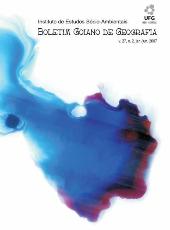The urban sustainability in cities
DOI:
https://doi.org/10.5216/bgg.v27i2.2448Abstract
Approximately 47% of the Cerrado biome, one of the world´s biodiversity hotspot, have been already converted. In Goiás, the only State thoroughly within the Cerrado limits, around 63% of the original vegetation cover have been replaced by cultivated pasture and agriculture fields. Unfortunately, most of the (still ongoing) deforestation has taken place in disagreement with what the Forest Code determines. At the same time, government protected areas represent about only 1% of the State area. Within these circumstances, the use of economic instruments, among them the off-site legal forest reserve pproach, may become an important mechanism regarding the protection of the egetative cover and agglomeration of the remnant vegetation fragments. Thus, in this paper we discuss some of the issues related to the simulation of legal reserve markets in Goiás, particularly those concerning the scales and scope of the analysis, as well as a variety of spatial and regulation scenarios in which the transactions may take place. Finally, and taking into account the Protected Areas State System (SEUC), we present a set of actions and strategies aiming at: a) the SEUC consolidation and expansion, b) the definition of legal mechanisms and policies for the implementation of a trading system, and c) the development of a territorial and environmental management system.Downloads
Downloads
Published
How to Cite
Issue
Section
License
Authors will not receive any payment for publishing their work in Boletim Goiano de Geografia. Therefore, they must grant all rights to the journal. However, they are entirely and exclusively responsible for the published contents, and editors are free to make corrections or adjustments to texts in conformity with publication guidelines.







